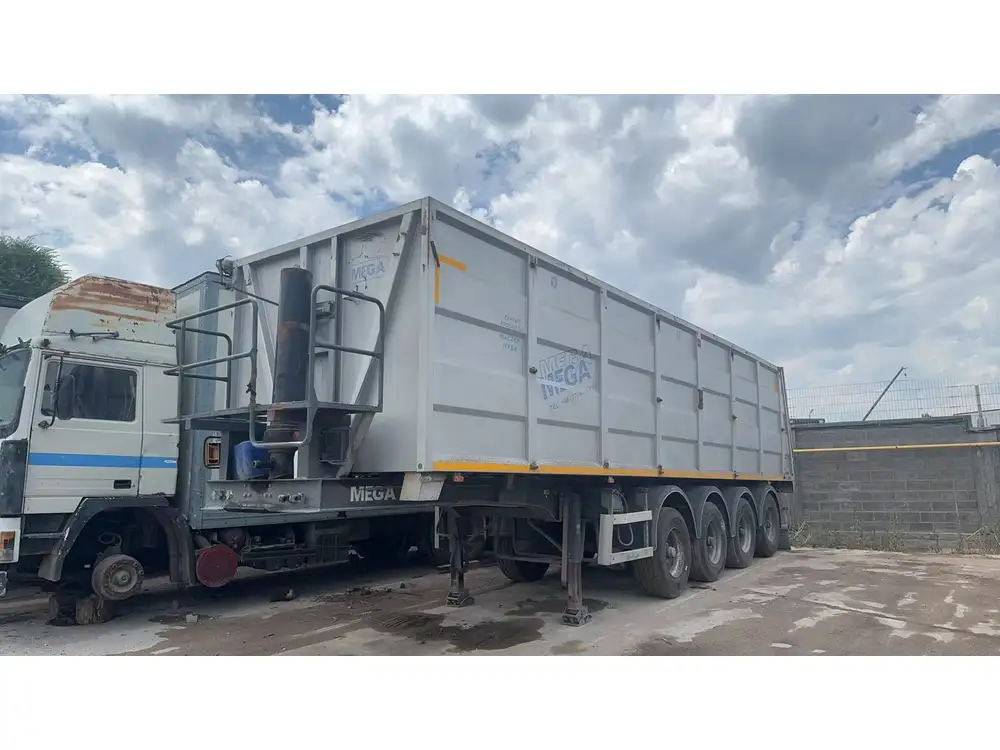Navigating the complexities of semi-trailer registration in California involves understanding a multitude of regulations and procedures that ensure compliance with state laws. With a rising demand for efficient transportation solutions, it becomes imperative for manufacturers, fleet operators, and individual truck owners to familiarize themselves with the specifics surrounding the registration of semi-trailers within the state.
What is a Semi-Trailer?
A semi-trailer is a type of trailer that is designed to be towed by a tractor truck. Unlike a full trailer that has wheels at both the front and back, a semi-trailer relies on a coupling with the truck’s rear axles for support. They are commonly used in freight transport due to their ability to carry heavy loads while providing flexibility and maneuverability on the road.
Why is Registration Necessary?
The registration of semi-trailers in California is crucial for several reasons:
- Legal Compliance: Registering your semi-trailer ensures that you’re in compliance with state laws that govern vehicle operation.
- Toll and Fee Assessment: Registered vehicles are required to pay road use taxes and tolls, contributing to the maintenance of state infrastructure.
- Liability and Safety: Registration helps in tracking ownership, which is essential in case of accidents or theft.
- Insurance Purposes: Most insurance companies require proper registration documentation to offer coverage.

The Registration Process for Semi-Trailers in California
The registration process can seem complex, but it can be broken down into several manageable steps:
Step 1: Gather Necessary Documentation
To begin the registration process, you will need to collect the following documents:
- Proof of Ownership: This could be a bill of sale or a Manufacturer’s Certificate of Origin (MCO).
- Sales Tax Payment Evidence: A receipt showing sales tax payment might be necessary if you purchased the trailer from a dealer.
- Vehicle Identification Number (VIN): Ensure that the VIN is clearly displayed on the trailer.
- California Highway Patrol (CHP) Inspection: Certain trailers may require a CHP inspection for safety compliance, especially if they are used for commercial purposes.
Step 2: Complete the Application Form
Upon gathering the required documents, the next step is to fill out the appropriate registration application form. The California Department of Motor Vehicles (DMV) provides several forms, including:
- Application for Title or Registration (Form REG 343)
- Vehicle/Vessel Transfer and Reassignment Form (Form REG 262)
Ensure all sections are filled out accurately to avoid delays.

Step 3: Visit the Local DMV Office
After completing the application, schedule an appointment or visit your local DMV office. Bring all documents and completed forms to the appointment. During your visit, you will:
- Submit your application and documents.
- Pay the applicable registration fees, which can vary based on the trailer’s weight, type, and applicable taxes.
Step 4: Receive Your Registration and License Plates
Once your application is processed, you will receive:
- A registration card that serves as proof of registration.
- License plates, if required, to affix to your semi-trailer.
Step 5: Maintain Compliance
After registration, it’s vital to keep your registration current. This involves renewing it annually and updating any changes in ownership or modifications to the vehicle.

Costs Associated with Semi-Trailer Registration
Understanding the costs involved is essential for budgeting through the registration process. Here’s a breakdown of potential costs:
| Item | Estimated Cost |
|---|---|
| Registration Fee | $30 – $70 based on weight |
| CHP Inspection Fee | $50 – $100 (if applicable) |
| Use Tax | Varies based on purchased price |
| License Plate Fee | Approximately $20 |
| Additional Fees | Varies by county |
Tip: Always check the California DMV website or consult directly with your local DMV office for the latest fee schedule and potential changes to regulations.
Common Challenges and FAQs in the Registration Process
Despite the straightforward nature of the registration process, several common challenges may arise. Addressing these through frequently asked questions may help users navigate the procedure more smoothly.
1. What if I lost my registration documents?
If you lose your registration documents or title, you can apply for a duplicate by filling out the Application for Duplicate Title (REG 227) and paying the required fee.

2. Do I need special permits for heavy-duty semi-trailers?
Yes, operators of heavy-duty trailers may need additional permits, including overweight or oversize permits, depending on their load.
3. Can I register my semi-trailer online?
Certain applications, including renewals, can be completed online via the California DMV website. However, new registrations typically require an in-person visit.
The Importance of Keeping Accurate Records
Accurate and meticulous record-keeping can significantly simplify the registration process and address future queries or disputes. Here are best practices for maintaining records:
- Document Storage: Store all ownership documents, receipts, and inspection records in a dedicated folder.
- Renewal Reminders: Set calendar reminders for registration renewals at least a month in advance.
- Regular Inspections: Schedule annual inspections and retain those records to demonstrate compliance.

The Role of Technology in Streamlining the Registration Process
With advancements in technology, several tools and applications have emerged that can assist in managing the registration process more effectively. Here’s how technology can help:
- Automated Reminders: Use apps that send notifications for registration renewals and inspections.
- Document Management Software: Implement cloud-based solutions to remotely store and organize necessary documents.
- Online Forums and Communities: Join trucking and transportation forums where you can learn tips and best practices from fellow operators.
Conclusion
Understanding the intricacies of semi-trailer registration in California is vital for compliance and operational efficiency. By familiarizing yourself with the processes, documentation requirements, and potential challenges, you can navigate the registration landscape confidently.
Whether you’re a fleet manager, an owner-operator, or a manufacturer, knowing how to properly register semi-trailers will not only ensure legal compliance but also facilitate smoother operations in the transport sector. Maintain your vehicles, keep comprehensive records, and utilize technology to stay ahead of the curve.
Equipped with this information, you can drive further towards achieving operational success while adhering to California’s registration laws.



